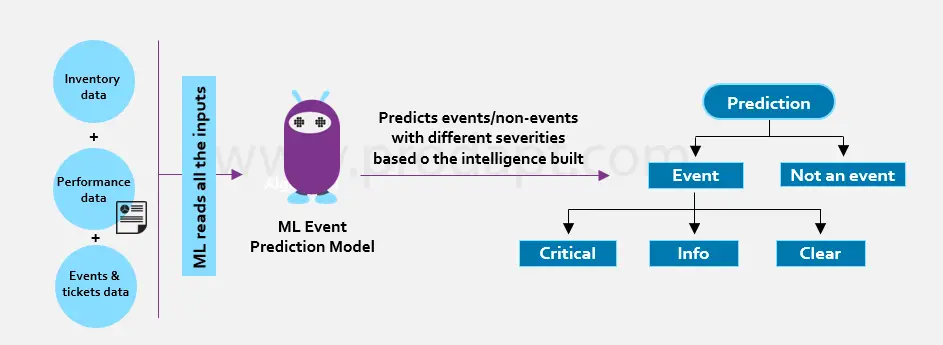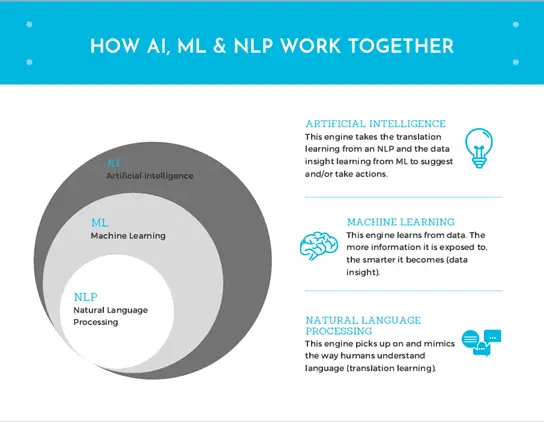Leveraging Machine Learning APIs for Enhanced Application Features

Introduction:
Machine learning (ML) has emerged as a transformative technology, enabling computers to learn from data and improve their performance over time. With the advent of cloud-based ML APIs, developers can easily integrate ML capabilities into their applications, leading to enhanced features and improved user experiences.
Advantages of ML APIs:

- Improved Efficiency: ML algorithms can automate repetitive tasks, reducing human effort and increasing productivity.
- Faster Innovation: APIs provide pre-trained models and algorithms, accelerating application development and reducing time to market.
- Customization: Developers can tailor ML models to their specific application requirements, ensuring optimal functionality.
- Cost-Effectiveness: Cloud-based APIs offer pay-as-you-go models, eliminating the need for expensive in-house infrastructure.
Applications in Enhanced Features:

- Personalized Recommendations: By analyzing user behavior, ML APIs can generate tailored content recommendations, improving engagement and customer satisfaction.
- Fraud Detection: ML algorithms can identify suspicious transactions in real-time, reducing financial losses and enhancing security.
- Image and Speech Recognition: APIs integrate image and speech recognition capabilities into applications, allowing for advanced features such as visual search and voice control.
- Predictive Analytics: ML models can forecast future events based on historical data, enabling proactive decision-making and risk mitigation.
- Natural Language Processing: APIs provide sentiment analysis, text extraction, and summarization capabilities, enhancing communication and decision-making within organizations.
Best Practices for Implementation:
- Choose the Right API: Assess the available APIs and select the ones that best match your application requirements.
- Prepare Data: Ensure your data is high-quality, clean, and properly formatted to optimize ML model performance.
- Monitor Performance: Regularly evaluate the performance of your ML-enabled application and make adjustments as needed to maintain accuracy and efficiency.
- User Feedback: Leverage user feedback to identify areas where ML can further enhance the application’s functionality and user experience.
Conclusion:
Leveraging ML APIs empowers developers to create applications with enhanced features, improved efficiency, and faster time to market. By adopting these best practices, organizations can harness the power of ML to drive innovation and deliver exceptional user experiences.## Leveraging Machine Learning APIs for Enhanced Application Features
Executive Summary
Machine learning (ML) is revolutionizing software development by enabling applications to perform complex tasks with unprecedented accuracy and efficiency. By leveraging ML APIs, developers can seamlessly integrate these capabilities into their applications, enhancing user experience, streamlining processes, and driving innovation. This article explores five transformative use cases of ML APIs, empowering developers to unlock the full potential of their applications.
Introduction
In today’s competitive digital landscape, businesses are constantly seeking ways to differentiate their applications and provide users with an exceptional experience. ML APIs offer a powerful solution, allowing developers to harness the power of AI to deliver personalized, intelligent, and data-driven features that set their applications apart.
1. Intelligent Automation
- Streamlined Workflows: ML APIs automate repetitive tasks, freeing up human resources for higher-value activities.
- Enhanced Accuracy: ML algorithms analyze data patterns and make decisions with unmatched accuracy, reducing errors and improving outcomes.
- Real-Time Decision-Making: APIs enable applications to make lightning-fast decisions based on real-time data, providing users with immediate insights and recommendations.
2. Predictive Analytics
- Personalized Recommendations: ML APIs analyze user behavior and preferences to provide personalized recommendations for products, services, or content.
- Risk Assessment: Predictive models identify potential risks or vulnerabilities, enabling businesses to take proactive measures for mitigation.
- Forecasting and Planning: ML models assist in forecasting demand, predicting trends, and optimizing business strategies based on historical data and real-time insights.
3. Computer Vision
- Automated Image Analysis: ML APIs enable applications to analyze images and extract meaningful information, such as object recognition, facial detection, and OCR.
- Video Surveillance and Analysis: ML algorithms monitor video feeds, detect anomalies, and trigger alerts, enhancing security and efficiency.
- Medical Image Diagnosis: ML models assist radiologists in diagnosing diseases more accurately and efficiently, potentially saving lives.
4. Natural Language Processing
- Intelligent Chatbots: ML APIs empower applications with the ability to engage in natural language conversations with users, providing support and answering queries.
- Text Analysis and Sentiment Analysis: ML models analyze text documents to extract key themes, identify sentiments, and generate automated summaries.
- Machine Translation: ML algorithms facilitate real-time translation between languages, bridging communication gaps and fostering global collaboration.
5. Anomaly Detection
- Fraud Detection: ML models detect fraudulent activities in financial transactions, protecting businesses from financial losses.
- Cybersecurity Monitoring: ML algorithms monitor network traffic and identify potential cyber threats, safeguarding sensitive data and systems.
- Equipment Fault Detection: ML models analyze sensor data to predict equipment failures, preventing downtime and ensuring business continuity.
Conclusion
Leveraging ML APIs unleashes endless possibilities for software developers, enabling them to create applications that are smarter, more efficient, and more user-friendly than ever before. By incorporating ML capabilities into their applications, businesses can drive innovation, enhance user satisfaction, and gain a competitive edge in the rapidly evolving digital landscape. The transformative use cases explored in this article provide a glimpse into the immense potential of ML APIs, and we can expect even more groundbreaking applications to emerge in the years to come.
Keyword Tags
- Machine Learning APIs
- Intelligent Automation
- Predictive Analytics
- Computer Vision
- Natural Language Processing
FAQs
- How can ML APIs improve application performance?
By automating tasks, increasing accuracy, and providing real-time insights. - What are some examples of real-world applications of ML APIs?
Personalized recommendations, fraud detection, medical image diagnosis. - Are ML APIs difficult to integrate into applications?
Not necessarily, many ML API providers offer seamless integration options. - Can ML APIs be used to solve complex business problems?
Yes, ML APIs can provide data-driven solutions to problems such as risk management and predictive analytics. - What are some best practices for using ML APIs?
Select the right ML API for your needs, ensure data quality, and monitor API performance.

This article provides a comprehensive overview of how machine learning APIs can revolutionize application development. The incorporation of ML models enhances applications with advanced capabilities such as predictive analytics, natural language processing, and computer vision. Well-structured and insightful!
While the article highlights the potential benefits of ML APIs, it fails to address the challenges associated with their implementation. Integrating ML models can be complex and requires specialized expertise. Moreover, the accuracy and reliability of these models are often questionable.
Can you provide more information on the specific types of ML APIs available? I’m interested in exploring their applications in healthcare and finance.
I strongly disagree with the author’s assertion that ML APIs are only suitable for large-scale enterprises. Small businesses and startups can also leverage these APIs to enhance their applications and gain a competitive edge.
Imagine an app that uses ML to predict your next witty comment! The possibilities are endless with these ML APIs. I can’t wait to see what developers come up with next.
Oh wow, another article claiming that ML APIs are the holy grail of application development. Wake up, people! They’re just a bunch of hype and don’t live up to the exaggerated expectations.
I’m picturing an app that uses ML to generate random dance moves. It would be the ultimate party companion! Who needs a DJ when you have an AI choreographer?
The article mentions the importance of selecting the right ML API for your specific needs. Can you provide some guidance on how to evaluate and compare different APIs based on factors such as accuracy, latency, and cost?
I’m not convinced that ML APIs are as secure as traditional methods. How do you ensure that these APIs are not vulnerable to cyberattacks or data breaches?
This article has opened my eyes to the transformative power of ML APIs. I’m amazed by the potential to create innovative and intelligent applications that can solve real-world problems.
While the benefits of ML APIs are undeniable, I’m concerned about the ethical implications. How do we prevent these technologies from being used for malicious purposes or perpetuating biases?
I’m eager to experiment with ML APIs in my own projects. Can you recommend any resources or tutorials that provide hands-on guidance for beginners?